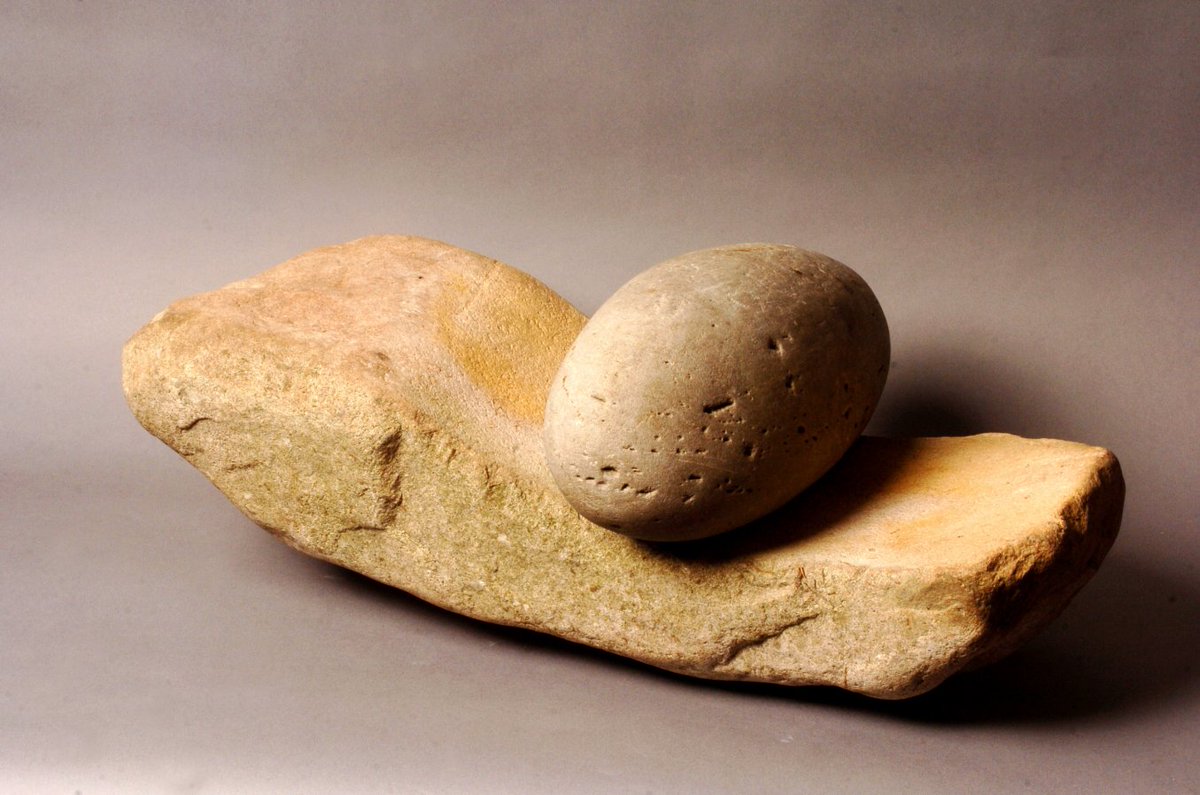

All of these require further consideration. Or maybe the floor was completely removed during the construction of the buttresses. Various other suggestions were put forward – perhaps the orthostatic recesses along the western wall meant that no flooring was laid in that area (in Structure Twelve the yellow clay floor stopped at the thresholds of the internal recesses). Why? Was the clay floor removed before the construction of the phase two buttresses or was it never there in the first place? These are the questions we’re looking to answer.Ī sondage – a small, but deep, exploratory trench – was discussed to see whether deposits under the yellow clay floor relate to Structure Ten or to another structure beneath. Saddle quern 1 - YouTube I make quern stones for museums, mills, and working farms to help visitors understand how we used to bring grain two thousand + years ago.This is a saddle qu. Yellow clay was the Neolithic flooring material of choice at the Ness but in parts of Structure Ten, the area under the south-western buttress for example, it appears that no floor was laid. We’ll begin today’s diary in Structure Ten, where dig director Nick and supervisors Jo and Sinead got together to formulate a strategy for tackling the enigma of missing floors in sections of the building. “Muy eficaz la licuadora,” (the blender’s very efficient) she said as she left.Nick, Jo and Sinead ponder the mystery of Structure Ten’s missing floor. No way of telling from the experiment, I think.ģ. I’m still not clear whether the grinder tried for maximum juice and tipped it off the metate or whether she simply crushed the pineapple and extracted the juice with the sieve. The eighteenth and nineteenth century Mexican kitchen could do lots of things a European one either couldn’t or, if it could, only with much more effort. Of course in Europe (or in Mexico) you could use a pestle and mortar but it’s much fiddlier. With the metate it was really easy to juice a pineapple. Heavy work.Īnd there you can see the traditional strainer on the right. Don Bruno, my gardener, now in his mid 70s, remembers how in his youth the arrieros, muleteers, walked three days down to the tierra caliente (the warm regions) to buy fruits like pineapple and mango and then three days back. The poor weren’t grinding pineapple for themselves. Must ask an older generation about juice.īut they would have to be the wealthy. Even today metates have different sizes and shapes for different uses. Perhaps there were special juice making metates with a different bottom. We heaved the metate up by its back leg and even so the juice tended to dribble around the bottom end and on to the floor.

The lower lip of the grindstone turns up so that ground maize won’t fall off (at least that’s my theory). What turned out to be tricky, as I’d rather expected, is getting the juice into the bowl. You can see the puddle of juice (what looks like a bright blue trapezoid is actually a reflection of her top in the pool of juice). You start your downward stroke and the mano slides forward all too easily.

The only problem is that with grains the ground material, whether its wet or dry, grabs the surface of the metate and offers some resistance. Compared to grinding grains it takes no effort at all. To her right is the metate (grindstone), behind that a pot for what I know not, below the metate a bowl to collect the juice of the pineapple (I assume) while she is straining what I assume to be pineapple pulp through a traditional strainerĪnd here’s my kitchen floor ready to go: metate, pineapple in chunks, bowl to catch the juice, bowl for straining the pulp (you’ll see the strainer a couple of photos down). But the pineapple grind snuck up on me because of the posts on aguas frescas.Īnd here’s a blow up of the pineapple grinder down on the bottom right. I should really describe this project up front and will soon. They weren’t actually either simple or primitive as I will explain at great length shortly.īut for now I’ll just say that I want to explore (a) the huge number of ways grindstones were used in Mexico until about a generation ago and (b) to understand the variety of grindstones used around the world. Well, it’s all part of a big project to get a better handle on “simple” grindstones. Now, you might say, who in their right minds would get down on their knees to grind a pineapple. Inspired by this oil painting that shows a woman grinding pineapple to make juicel, I thought it was time to have a go myself. By Rachel Laudan SeptemDrink, Food History, Grinding, Mexican Food 5 Comments


 0 kommentar(er)
0 kommentar(er)
